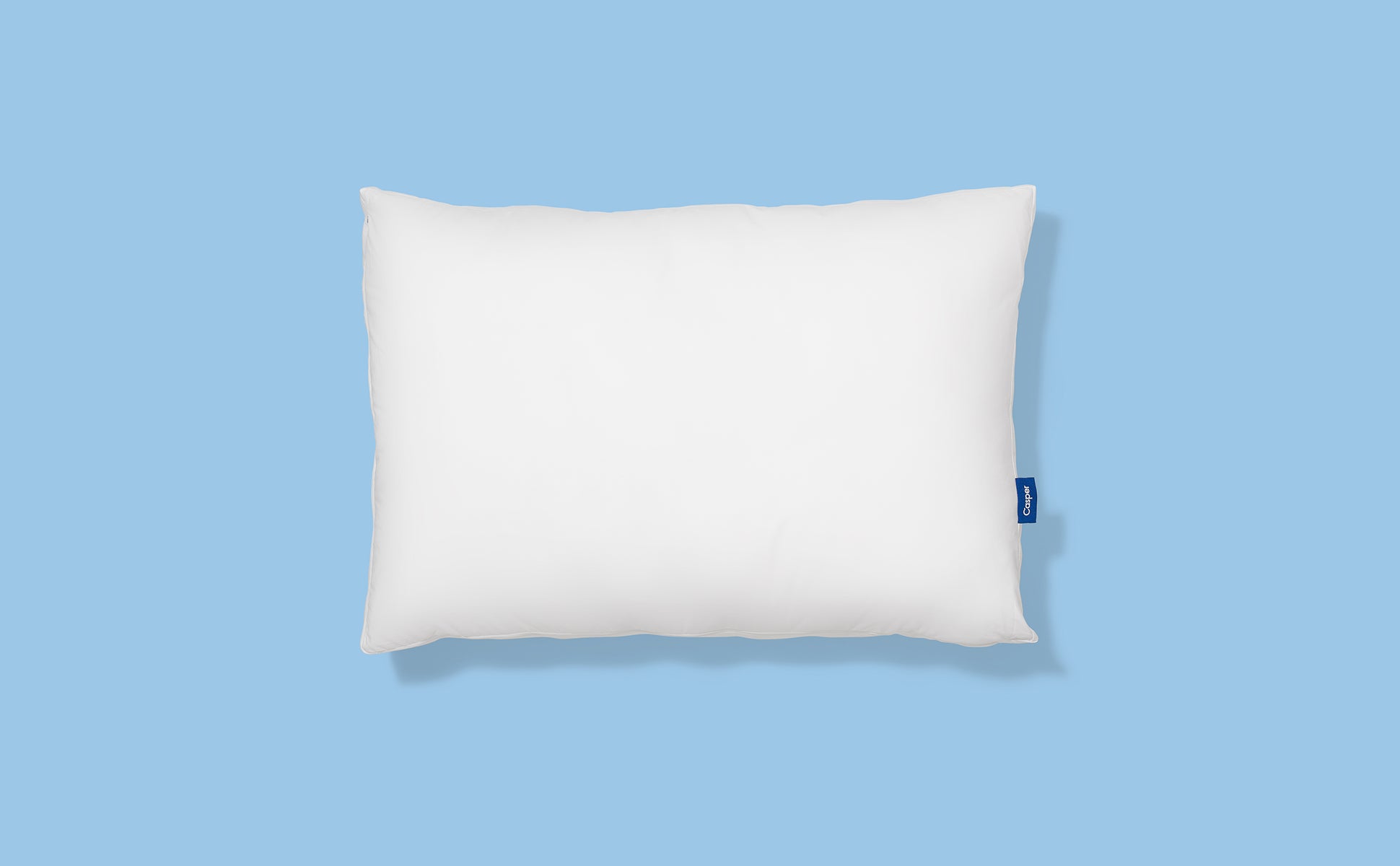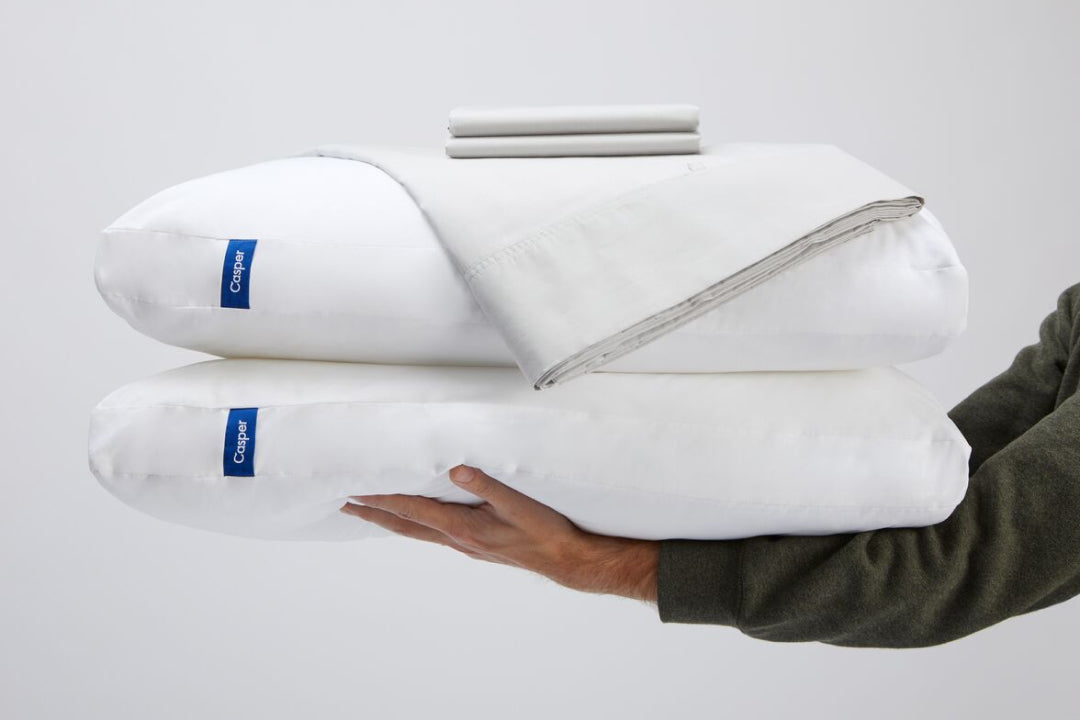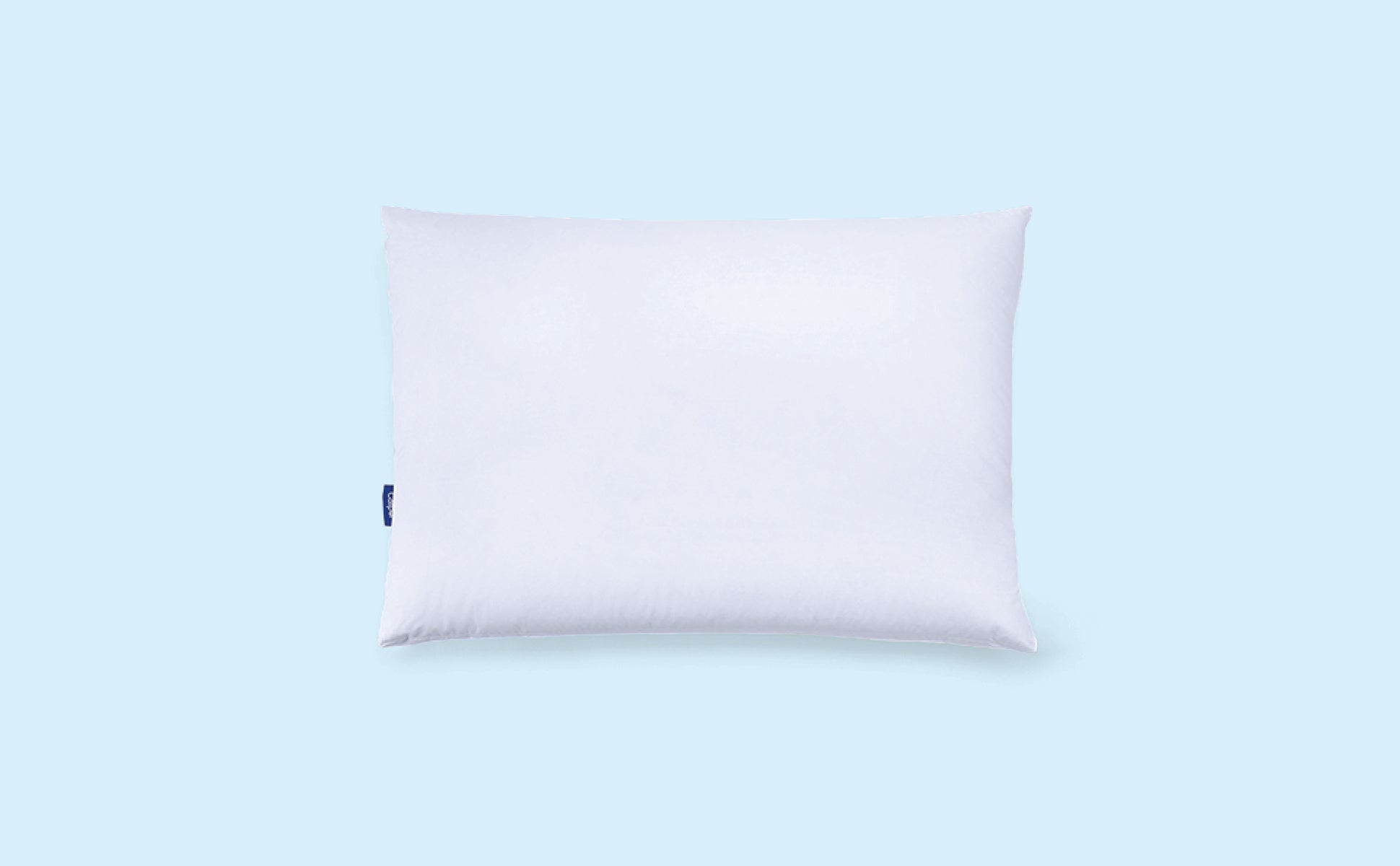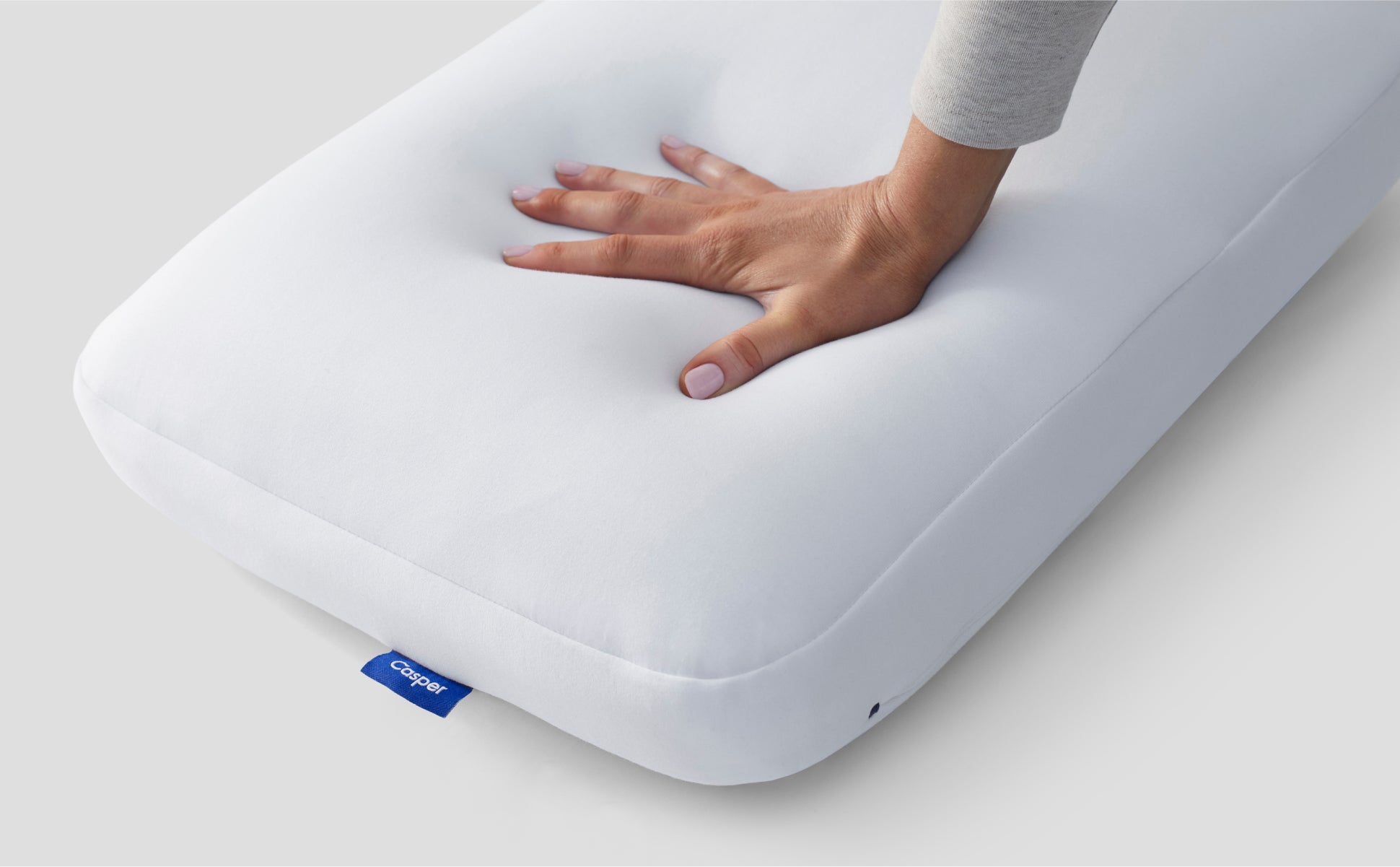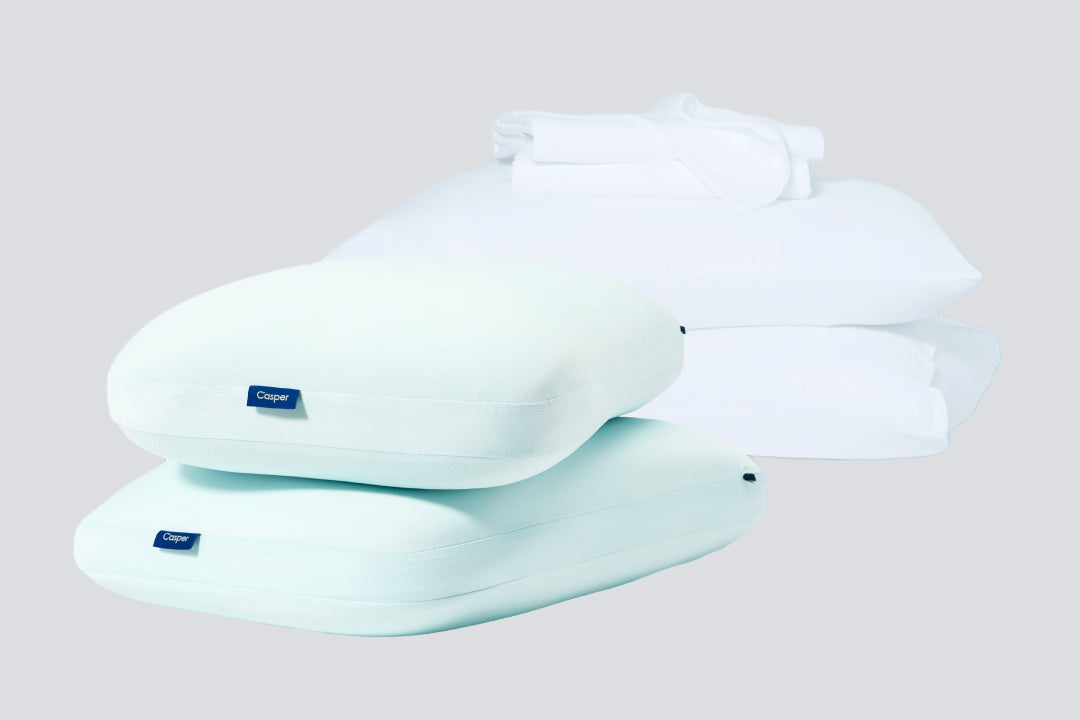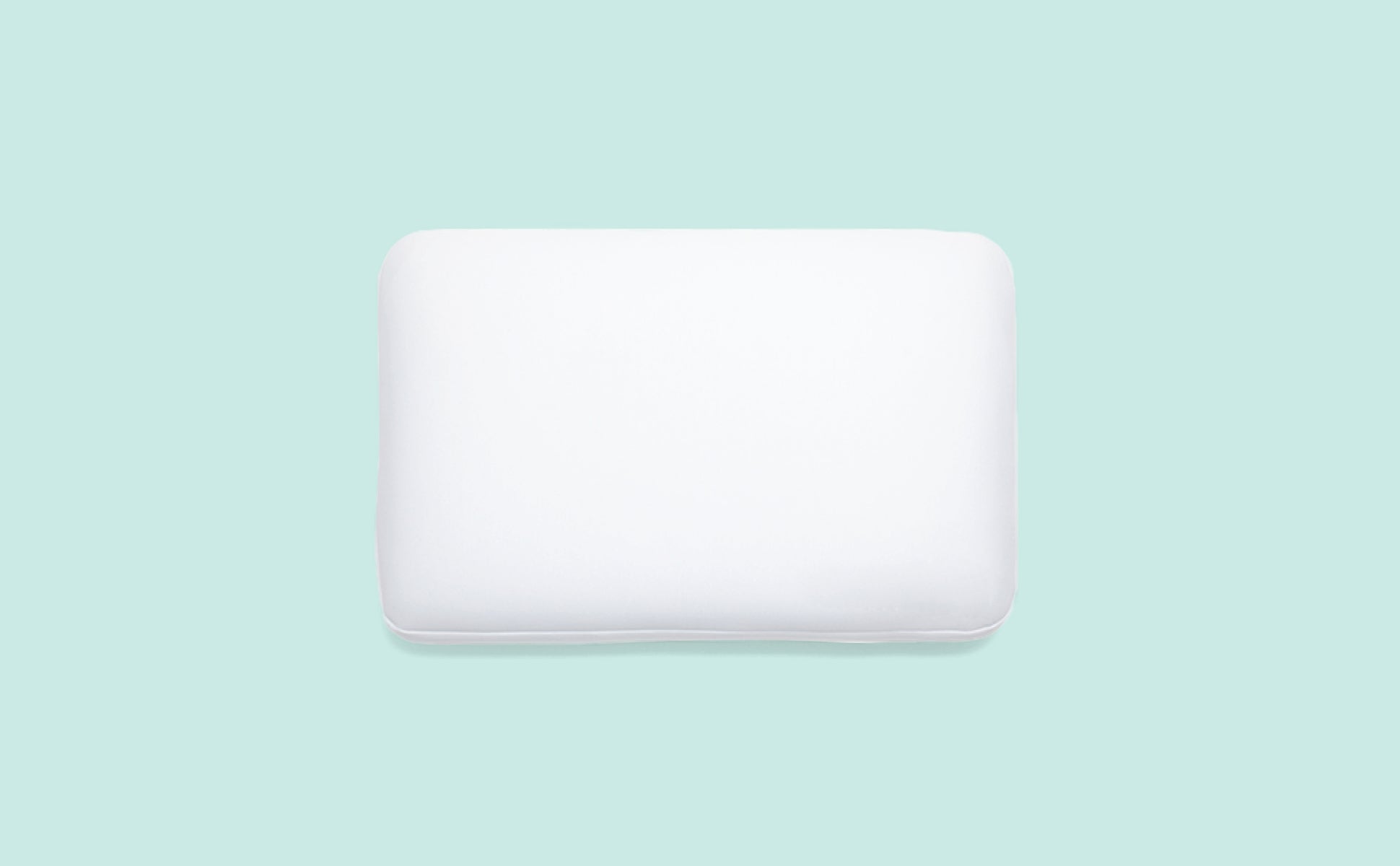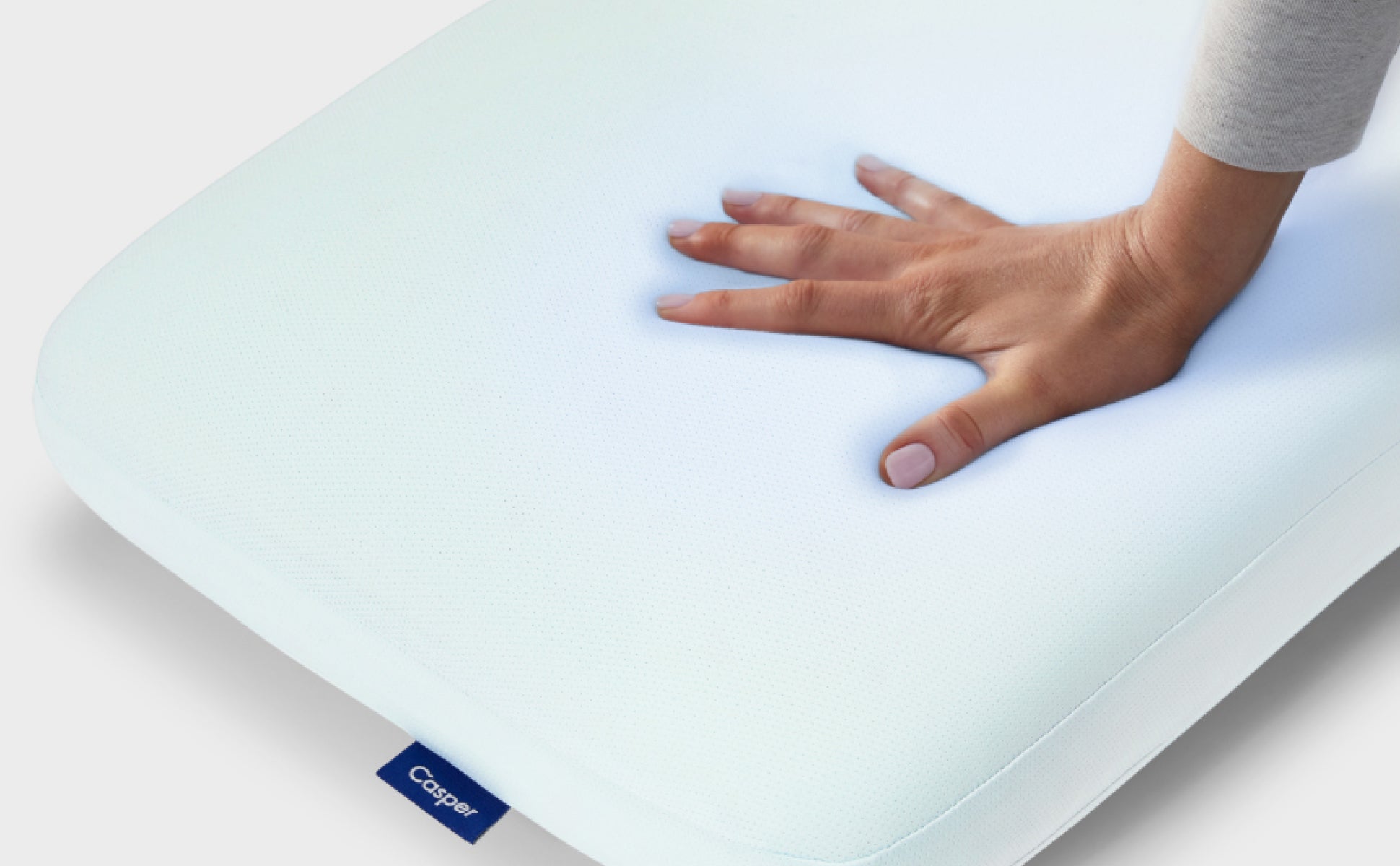Choose a pillow based on your sleep position: side sleepers need firm pillows, back sleepers need medium-firm, and stomach sleepers need soft, thin ones. Material and firmness are also important for comfort and support. Replace pillows every two years.
When it comes to getting a solid night’s sleep, a top-notch mattress and a pair of high-quality bed sheets might immediately spring to mind.
But in your search for more rejuvenating rest, you may overlook another vital component of sleep: your pillow.
At the same time, the perfect pillow is as subjective as the right-sized bed. Flat and firm, or fluffy and sumptuous? Memory foam or down? Orthopedic or gel?
While experts can’t crown a single winner in the great pillow debate, you can find one that meets all your sleep needs with a little help from Casper. Keep reading to learn how to choose a pillow — and why they’re often key to restorative (even brag-worthy) rest.
Why Choosing the Right Pillow Matters
Ever woken up with massive neck pain after barely lifting a finger the day before? Or feel fuzzy-brained after clocking in eight hours of sleep?
Your pillow could be to blame: According to Harvard Health, the wrong pillow can lead to a host of complications ranging from sleep deprivation to disruptions in continuous positive airway pressure (CPAP) treatment.1
The right pillow, on the other hand, may offer several benefits:
- Improved spinal alignment – Proper posture is just as crucial when you’re sleeping as it is when you’re awake.1 A supportive pillow helps keep your back, neck, and shoulders in an optimal position during the night.2 Ultimately, this can have a positive impact on your overall health, including less wear and tear on your joints and greater flexibility.3 You might also experience fewer headaches.4
- Reduced aches and pains – The neutral alignment the right pillow nurtures may decrease the chance of waking up with the telltale aches and pains caused by a less-than-ideal sleeping position.5
- Enhanced sleep quality – Sleep is a major part of your health, and even small losses — like waking up to readjust a flattened pillow — can affect your long-term wellness.6 Your ideal pillow gives you the coziness you covet to fall into dreamland. How so? In part by curbing snoring and dialing down pressure on your back, neck, and shoulders.4
But what makes a pillow the right pillow? Let’s explore.
Factors to Consider When Choosing a Pillow
Plush, firm, thick, thin: The characteristics of your dream pillow are as unique as how you unwind at night. While selecting the right pillow comes down to your personal preferences, revolutionize your sleep by taking a practical approach.
Your Sleep Position is #1
Sleep experts indicate that your sleeping style should be one of the biggest determining factors when shopping for a pillow — again, to keep that neutral alignment intact, maximize comfort and support, and encourage uninterrupted rest.7
Side Sleepers: Firm, Thick Pillows for Neck Support
If you naturally tend toward sleeping on your side, you’ll find much to love and appreciate about firm, thick pillows, which help keep your head, shoulders, and neck level.8
How can you be sure that the pillow you choose promotes alignment? Here’s what to consider:
- Pillow loft – “Pillow loft” is a much cooler way to say pillow height. In general, “low loft” refers to pillows that are three inches thick or less, “medium loft” is between three and five inches, and “high loft” pillows are five inches high or more, though there is no industry standard definition of loft. Some sleep experts suggest that your pillow height should be roughly the same length as the space between your ear and shoulder.8
- Your mattress’s firmness – Your mattress’s firmness should also play into your decision. Broadly speaking, the firmer your mattress, the higher your pillow should be. Why? You need more height to keep your upper body level. Check out our blog to learn more about the mattress firmness scale.
Ultimately, side sleepers may benefit most from a medium to full loft memory foam pillow.
One to try: The Original Casper Pillow. The unique pillow-in-pillow design offers mid-loft height to support you all night long.
Back Sleepers: Medium Firmness to Maintain Alignment
Being a back sleeper offers several health benefits, such as9:
- Reducing the risk of skin irritation and wrinkles
- Dialing down tension headaches (by keeping your spine aligned)
- Decreasing sinus buildup
- Preventing shoulder aches
If you’ve trained yourself to sleep on your back (or you do it naturally), you’ll hit the hay with greater ease by investing in a medium-firm pillow with a medium-high loft.10 You’ll want a pillow that elevates your head and neck without interrupting your spine’s natural curvature.
Stomach Sleepers: Soft, Thin Pillows to Prevent Strain
You may feel your sleepiest when lying on your stomach. But sleeping stomach-down puts strain on your back and spine, which might cause aches and pains throughout your entire body.11 Stomach sleepers also have to twist their necks which, over time, may lead to neck issues.11
In other words? Sufficient head and neck support is especially important for stomach sleepers. A soft, thin (or “low loft”) pillow may reduce the angle of your head and neck and improve your overall sleep posture.10
The Casper Low Loft Memory Foam Pillow might be the solution. Designed to keep your head and neck properly aligned, this soft and squishy low loft pillow gently hugs your upper body.
Pillow Material Options
Your pillow’s materials can also make or break a good night’s sleep.
Luckily, you have many types of pillows to choose from. These include12:
- Down – This fill is cushiony, light, and moldable, no matter if you choose synthetic, goose, duck, or all down. Learn more about down vs down alternative pillow options in our blog.
- Feather – With its shape retention but considerable softness, feather may be best for stomach and side sleepers.
- Cotton – Famous for being hypoallergenic and breathable.
- Latex – Both robust and moldable — oftentimes, a savvy combination for back and side sleepers.
- Memory foam – Thanks to its capacity to contour to your body, memory foam is great for all sleeping positions
- Bamboo – Produces a cooling effect (read: it’s an optimal fit for those who live in steamy climates)
To find your perfect pillow, let your sleeping position and your material preferences inform your choice.
For example, if you’re a stomach sleeper who prizes malleability in their pillow, a microbead pillow (which is firm and breathable) might be your golden ticket to comfier sleep. Happen to be dealing with persistent neck pain? An orthopedic pillow may alleviate pressure by promoting fundamental alignment.13
Still torn? Remember that picking the best pillow comes down to discovering your ideal balance between comfort and support. (Keyword being your.)
Pillow Firmness and Support
The same applies to your pillow’s firmness and support levels.
You may feel drawn to fluffier pillows you can sink your head into, or you may want a pillow that’s firmer and more substantial — you know your body best.
Keep the different levels of pillow firmness and support in mind (as well as your body weight) when you start shopping for the perfect place to rest your head. These include:
- Soft
- Medium soft
- Medium
- Medium firm
- Firm
Learn more about firm vs soft pillows in our blog.
Further, consider all the factors discussed above. To recap: Side sleepers may need a firmer pillow to cradle their necks. Stomach sleepers should opt for soft solutions. And back sleepers might find their Goldilocks level of comfort and support with a medium-firm pillow like the Original Casper Pillow — a classic, ultra-cozy design that adapts to your movements throughout the night.
Temperature Regulation
Temperature regulation is central no matter where you live in the world. After all, who hasn’t woken up drenched in sweat and found it impossible to fall back asleep?
To this end, you may want to search for a pillow that features:
- Perforated foam for enriched breathability
- Moisture-wicking materials
Tend towards the hotter side when you sleep? If so, you might want to add a cooling pillow to your cart. The Casper Essential Cooling Foam Pillow boasts a super-breathable cover. It’s also cool to the touch and boosts airflow, all to keep you chill and content from lights off to lights on. Learn more about how to stay cool at night with our helpful tips.
When Should You Replace Your Pillows?
Say you’ve found the pillow that meets and even exceeds your expectations. Can you hold onto it for, well, life?
In a word, no. While pillows don’t have an expiration date, per se, they do deal with a lot, from the weight of your head to particles, skin cells, dirt, and dust.14 So, when should you replace pillows? Generally speaking, you should replace your pillows every two years.14
However, you can maintain your pillow’s longevity by14:
- Investing in a quality product
- Keeping your pillow as clean as possible
- Using a pillow protector
Ultimately, if your pillow stops providing the perks it once offered, it may be time to retire it — and start retiring with a newer model.
How Casper Pillows Makes the Choice Easy
How to choose a pillow may seem simple enough. But for sleep that prepares you to take on the world, consider your usual sleeping position, your size, and your preferences. All can make an enormous difference between “good enough” and ahhhhhsome.
Casper can simplify the process even further. We offer a wide range of pillows to support every sleeper’s needs, from our uber-cooling Hybrid Pillow with Snow Technology to the Backrest Pillow for remote workers or those who love to lounge upright in bed.
End the great pillow debate with Casper — and reap the benefits of blissful, genuinely rejuvenating sleep.
Sources:
- Harvard Health. Is your pillow hurting your health? https://www.health.harvard.edu/pain/is-your-pillow-hurting-your-health
- University of Rochester Medical Center. Good sleeping posture helps your back. https://www.urmc.rochester.edu/encyclopedia/content.aspx?ContentTypeID=1&ContentID=4460
- Cleveland Clinic. Posture. https://my.clevelandclinic.org/health/articles/posture
- Better Health Osteopathy. The importance of a good pillow and how it can affect your sleep and health. https://betterhealthosteopathy.nz/the-importance-of-a-good-pillow-and-how-it-can-affect-your-sleep-and-health/
- Orlando Health. Are you waking up in pain? Change your sleep position. https://www.orlandohealth.com/content-hub/are-you-waking-up-in-pain-change-your-sleep-position
- National Heart, Lung, and Blood Institute. Why is sleep important? https://www.nhlbi.nih.gov/health/sleep/why-sleep-important
- Good Housekeeping. The types of pillows for each sleeping position. https://www.goodhousekeeping.com/home-products/pillow-reviews/a35301391/types-of-pillows/
- AARP. How to choose the perfect pillow for a good night’s sleep. https://www.aarp.org/home-family/your-home/info-2022/how-to-choose-the-perfect-pillow.html
- Healthline. 8 reasons sleeping on your back may solve your sleep issues. https://www.healthline.com/health/sleep/sleeping-on-your-back-may-help-you-get-the-rest-you-need
- Forbes. How to choose a pillow that perfectly suits your sleep needs. https://www.forbes.com/sites/forbes-personal-shopper/article/how-to-choose-pillow/
- Healthline. Is it bad to sleep on your stomach? https://www.healthline.com/health/is-it-bad-to-sleep-on-your-stomach
- Casper. 12 Different Types of Pillows for Every Sleeping Position. https://casper.com/blogs/article/different-types-of-pillows
- Hampton Roads Orthopedics Spine & Sports Medicine. Choosing the right orthopaedic pillow. https://www.hrosm.com/choosing-right-orthopaedic-pillow-for-spinal-health/
- The Strategist. How often should you replace your pillows? https://nymag.com/strategist/article/when-should-you-replace-your-pillows.html










